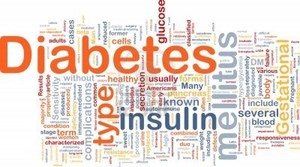The number of adults diagnosed with diabetes in the US increased 75% between 2000 and 2010, resulting in 9% of the adult population with diabetes. The cost of health care for people with diabetes is over twice that of the population overall (2.3 times higher), partly as a result of complications associated with diabetes, including heart disease and stroke. Understanding trends in healthcare costs for this vulnerable and growing patient group will be key to disease management in the future.
Trends in the financial burden of diabetes treatment
Generics/Research
|
Posted 22/08/2014
 0
Post your comment
0
Post your comment

The direct medical costs of diabetes in the US were estimated to be US$116 billion in 2007, with high costs to individuals, potentially creating a barrier to regular treatment and disease monitoring.
Peter Cunningham and Emily Carrier of the Center for Studying Health System Change, Washington, USA, monitored trends in out-of-pocket spending and medical cost burdens for people with diabetes between 2001 and 2009, and examined trends in the percentage of those patients using diabetes-related medicines, overall access to prescription drugs, and use of hospital care for people with diabetes [1].
The authors, whose data are published in the American Journal of Managed Care, found that the 18% increase in healthcare costs for people with diabetes aged 18–64 over this period was no different to the increase in healthcare costs for the 18–64- year old population overall.
The authors conclude that this is, at least in part, thanks to the increasing use of lower cost generics of important diabetes medicines. By making treatment more affordable, the number of complications associated with uncontrolled diabetes is likely to fall, as shown in the findings in this study.
Several generics alternatives to popular diabetes medicines were released during the study period (2000–2009), including four generic metformin and metformin-combination drugs. Generics accounted for 52.9% of all diabetes-related prescriptions from 2007 to 2009, up from 46.9% in the 2005 to 2006 period. Both total spending and out-of-pocket spending per prescription were found to be considerably lower for generics than they were for brand-name prescriptions.
The authors conclude that, despite increased disease prevalence, the financial burden of diabetes care to patients has decreased markedly over the past decade, due primarily to lower spending on prescription drugs. The rise in generics has had an important role to play in these cost reductions, which in turn has been linked to fewer hospital inpatient stays and emergency department visits.
Conflict of interest
The authors of the research paper [1] declared no conflicts of interest.
Editor’s comment
Readers interested to learn more about patients’ views on generics substitution are invited to visit www.gabi-journal.net to view the following manuscript published in GaBI Journal:
Readers interested in contributing a research or perspective paper to GaBI Journal – an independent, peer reviewed academic journal platform – please send us your submission here.
Related articles
The non-financial benefits of generics substitution
Brand-name versus generic drug costs
Reference
1. Cunningham P, Carrier E. Trends in the financial burden of medical care for nonelderly adults with diabetes, 2001 to 2009. Am J Manag Care. 2014;20(2):135-42.
Permission granted to reproduce for personal and non-commercial use only. All other reproduction, copy or reprinting of all or part of any ‘Content’ found on this website is strictly prohibited without the prior consent of the publisher. Contact the publisher to obtain permission before redistributing.
Copyright – Unless otherwise stated all contents of this website are © 2014 Pro Pharma Communications International. All Rights Reserved.
Most viewed articles
The best selling biotechnology drugs of 2008: the next biosimilars targets
Global biosimilars guideline development – EGA’s perspective
Related content
Japan’s drug shortage crisis: challenges and policy solutions
Saudi FDA drug approvals and GMP inspections: trend analysis
Generic medications in the Lebanese community: understanding and public perception
Community pharmacists’ understanding of generic and biosimilar drugs: Lebanon case study
Generic medications in the Lebanese community: understanding and public perception

Generics/Research Posted 23/01/2024
Community pharmacists’ understanding of generic and biosimilar drugs: Lebanon case study

Generics/Research Posted 08/09/2023
The best selling biotechnology drugs of 2008: the next biosimilars targets








Post your comment